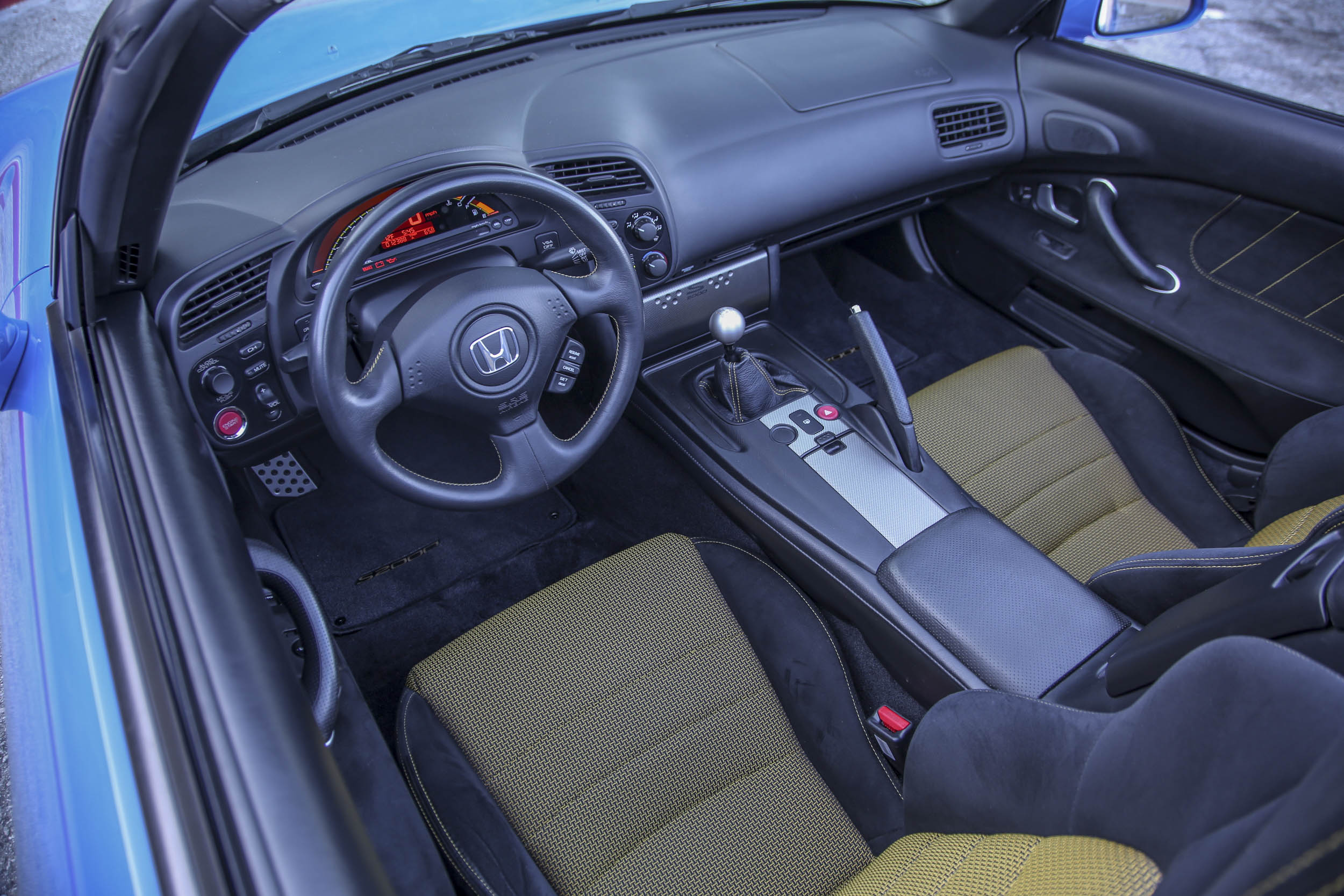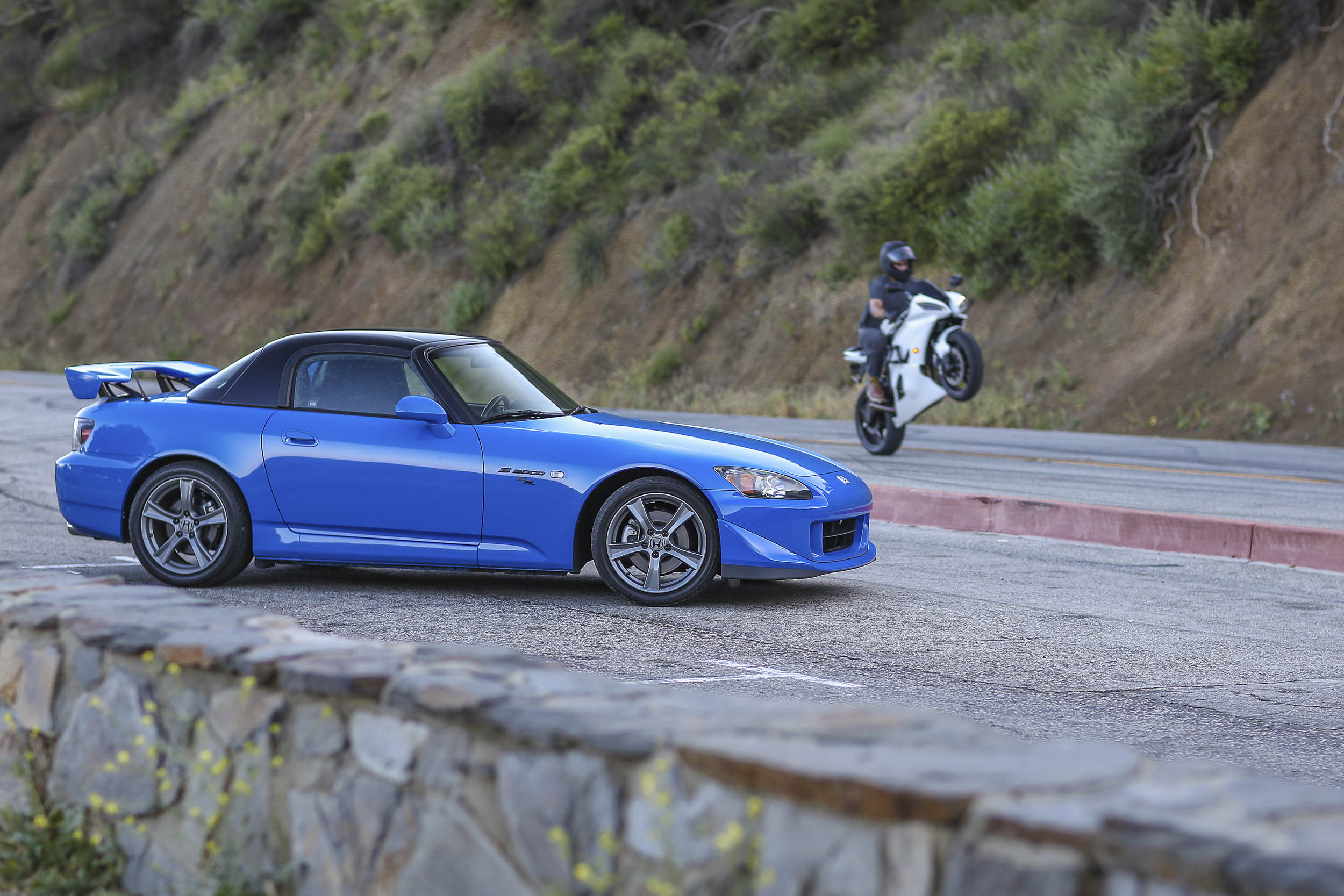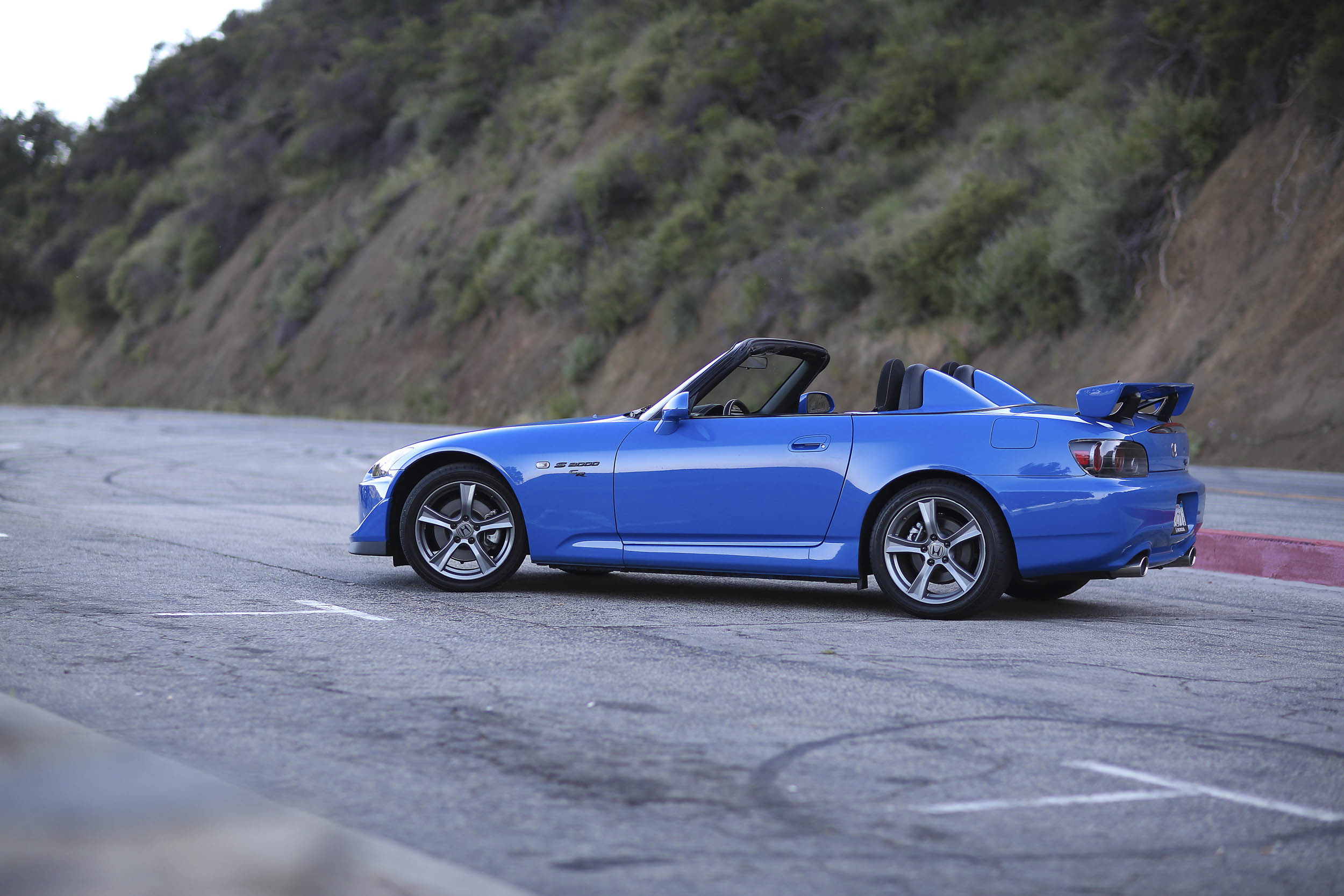Media | Articles
The 2009 Honda S2000 CR is a bad influence in the best possible way
A Heavy Duty four-wheel drive Chevy pickup, even one driven by a very agitated park ranger, cannot catch a 2009 Honda S2000 CR on Mulholland Drive. I know this. You know this. I assume an agitated park ranger knows this but won’t let that fact stop him.
I passed the guy about a mile back. I was pushing the Honda hard through a blind third-gear right hander, which I knew lead onto a short straight before a fast left right combination, and didn’t identify his big white pickup until it was too late. I was already at full throttle, the wail of the Honda’s 2.2-liter echoing off the Santa Monica mountains, when our eyes locked.
I backed off the gas and for a moment the world went into slow motion. I could see him sit up in the Chevy’s cab, wave a fist in disgust and stare me down. It was one of those moments when your stomach sinks with dread. You have to dig deep into your soul and weigh your personal values. Quickly evaluate your risk versus reward threshold. Coasting through the left hander, my mind raced with options, I came to the conclusion that I wasn’t going to wait around and find out exactly how agitated that park ranger was, or even if he turned around to give chase. This is the sort of moral dilemma a car like the Honda S2000 CR will lead you into.
Hammer down through the right hander, I get the Honda’s 2.2-liter back up into the VTEC, which switches to the more aggressive cam lobes around 6000 rpm, watch for the small green shift light on the digital gauge cluster, snatch fourth gear at eight grand and speak the inspirational words of the great American philosopher Bo Darville, “Bye, bye baby.”
Marketplace
Buy and sell classics with confidence

—-
Honda first showed the two-seat S2000 roadster in concept form at the 1995 Tokyo Motor Show. Named for its 2.0-liters of displacement it was a rear-wheel drive sportscar in the lineage of the brand’s S500, S600 and S800 models of the 1960s. Production began in 1999 in time for the company’s 50 year birthday and continued through 2009. The original price was $30,000 and 66,547 were sold in the United States.
It was a car that exploded on the scene with the car magazine’s salivating over its hardware and performance. In the August 1999 issue of Car and Driver, Larry Webster wrote this after his first rip in an S2000, “This September, sports-car fans, the car of your dreams will finally arrive. Honda’s S2000 comes to market with one goal: driving fun. It has the stuff sports-car fantasies are made of: a front-engine, rear-drive layout; a six-speed, close-ratio manual transmission; an unequal-length control-arm suspension all around; disc brakes; and supportive, firm bucket seats—in a package that weighs less than 2800 pounds. The S2000’s crown jewel, however, is a 2.0-liter naturally aspirated four-cylinder engine pumping out an incredible 240 horsepower at 8300 rpm and revving to an 8900-rpm redline.”
Webster is now editor-in-chief here at Hagerty and his words ring true nearly 20 years later. The Honda S2000 is fast and fun. It’s still the stuff of sports car fantasy. Especially here, in Malibu, on some of America’s great driving roads, which I have to myself on a sunny Monday afternoon. And its pace is quick enough to embarrass many modern machines. In The Snake, up past the Rock Store, which is a particularly tight and challenging section of road, it corners flat, soaks up mid-corner bumps and steers almost telepathically. It feels small, light and narrow, which it is, but its balance and stability are fantastic.
So I toss it in harder and harder looking for the limits of its front-mid-engine chassis. That’s right, front-mid-engine. Open the S2K’s long hood and marvel at the extreme set back of the DOHC aluminum engine, which is dressed in a red cam cover. It’s mounted entirely behind the front suspension.

In 2004 Honda tweaked the rear suspension for more stable handling (reducing the car’s penchant for oversteer), enlarged the wheels and tires from 16 to 17 inches and increased the stroke of the S2000’s engine, up to 2.2 liters. The change increased its torque 9 pound-feet to 162, dropped the peak from 7500 rpm to 6500 and lowered the redline to 8200 rpm. Horsepower, which now peaked at 7800 rpm instead of 8300 rpm, remained at 240 (revised to 237 hp in 2006).
Despite the changes, it’s still a high-strung little beast that sends a tingle through the wheel, pedals and seat. Not too much, but just enough to deliver an intense mechanical connection with the driver. Loud too. “…screams like Janet Leigh in her final scene in Psycho,” wrote Joe DeMatio (now Hagerty’s senior content manager) in Automobile back in the day.
Twist the key on a cool morning and push the red Engine Start button, which is left of the steering wheel, and the four-cylinder zings high for a good two minutes before settling down into a steady 1000-rpm idle. The six-speed gearbox, manipulated with a delightfully mechanical short-throw shifter and lightly weighted clutch, is geared unusually short to keep the revs up and the power on. Wring it out and the fifth gear upshift comes at only 100 mph, and it cruises at 80 mph in sixth gear at over 4000 rpm. It’s not a powertrain suited to a cross-country run, but in the hills and around Los Angeles, it’s invigoratingly visceral and it eggs you on like that kid in high school your parents warned was a bad influence. You can’t help but redline another gear. And another. It wasn’t me, mom, it was the car. The car made me do it.

Now, nearly a decade after its demise a successor to this sports car has yet to materialize, from Honda or any other automaker. By comparison a modern Miata or Nissan 370Z are two-seat Lincoln Town Cars. This has given the S2000 somewhat mythical status. It’s been called a four-wheel Japanese superbike because of its light weight and screaming four-banger, and these cars are in demand, even at Honda’s American headquarters in Torrance, California, where this 2009 S2000 CR is kept around for joy rides and press events.
CR stands for Club Racer. It was a lighter, more intense, track-focused version of the S2000 sold in 2008 and 2009. Honda knew the sports car’s days were numbered, and wanted to finish off its run with something special. The suspension was stiffened and its rear tires widened. Air conditioning and radio were optional. The soft top was replaced with a fixed tonneau cover and a fiberglass hardtop, which was an optional extra on the standard S2000.
Honda also added some chassis bracing, quickened the steering ratio from 14.9 to 13.8:1 and dressed it with The Fast and The Furious-inspired front and rear spoilers, which were said to be wind tunnel tuned. Price was $36,935, just $2,000 more than the standard car. In the United States Honda sold 625 in two years, including 174 in Apex Blue Pearl, the model’s signature color. They all got the black and yellow interior. This car has been driven 12,000 miles since new and the only modification is a new set of Bridgestone Potenza S-04 Pole Position rubber.
Despite the additional bracing, there is some chassis flex, which rattles the hardtop around. The CR’s stiffer suspension is really tuned for the track. It’ll launch your morning coffee all over the interior, which is unpredictably flush with head and legroom, although you’re kinda pinched between the door panel and the wide console. The steering column also does not adjust at all. No tilt. No telescope. And taller folks may find it mounted too close to their thighs. Forward visibility is miraculous as you look out past thin A-pillars and a low cowl, while the rear view is surprisingly uncompromised by that massive rear wing.

After the run through the hills, I pit stop at a Circle K on PCH, pay for a Gatorade and find a couple of young guys milling around the Honda. They know what it is. One is driving a modified Ford Focus ST and the other is in a built Subaru BRZ. “You just don’t see these,” the taller one says. “So rare.”
I can’t resist. “Hey, you guys haven’t seen an agitated park ranger around, have you? He’s driving a big white pickup.”


